
Feel free to add tags, names, dates or anything you are looking for
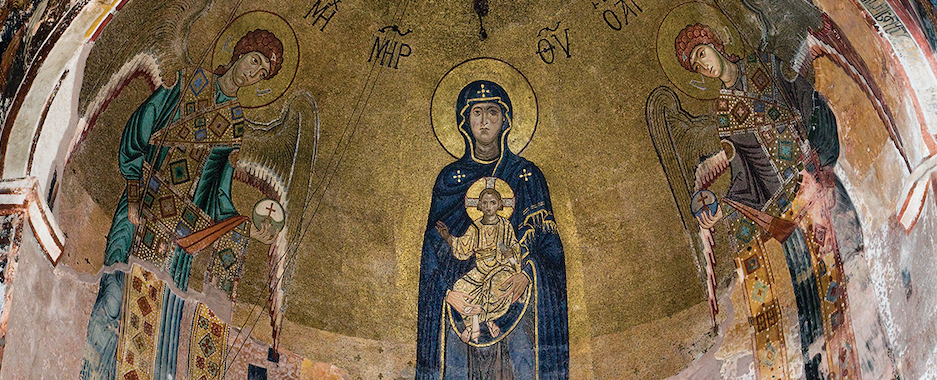
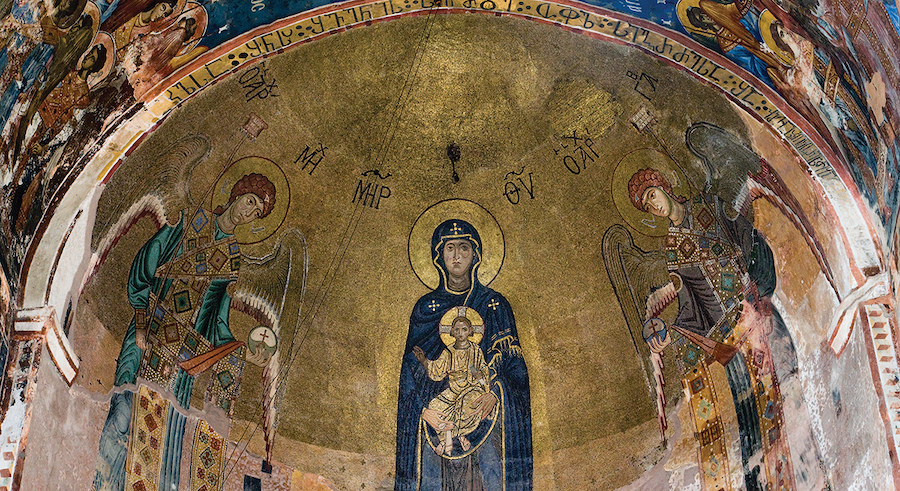
Gelati Monastery is one of the most important monuments of Georgian cultural heritage. The Monastery is located on a mountain slope on the outskirts of Gelati village, near Kutaisi in western Georgia. It was founded in 1106 by King Davit IV Aghmashenebeli (the Builder, 1089-1125) as a royal burial vault and a religious and educational centre, and was referred to in historical sources as a “Second Jerusalem” and a “New Athens”.
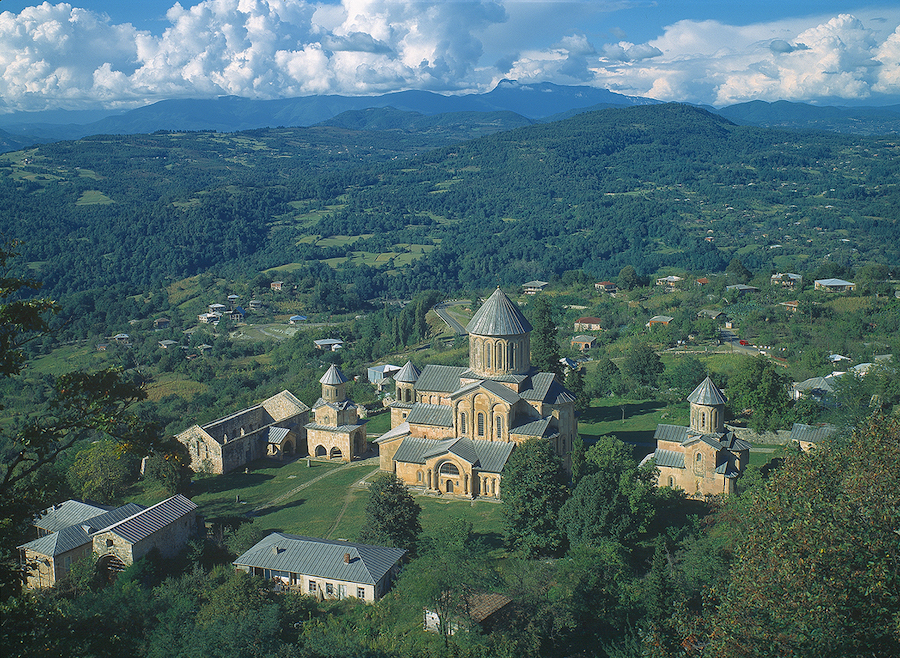
Gelati Monastery. General view. Photo: G. Chubinashvili National Research Centre
The Monastery is surrounded by a stone wall. The main Church of the Nativity of the Virgin stands in the center of the courtyard. Construction of the Church was begun by Davit IV and completed under his son – King Demetre I (1125-1156). The Church was consecrated in 1130. During Davit’s lifetime, the building of the Academy as well as the southern gate of the Monastery were built. Davit IV is buried inside the southern gate of the Monastery. Later, in the 13th century, the Church of St. George, the two-storied Church of St. Nicholas, and a bell-tower were erected in the Monastery grounds.
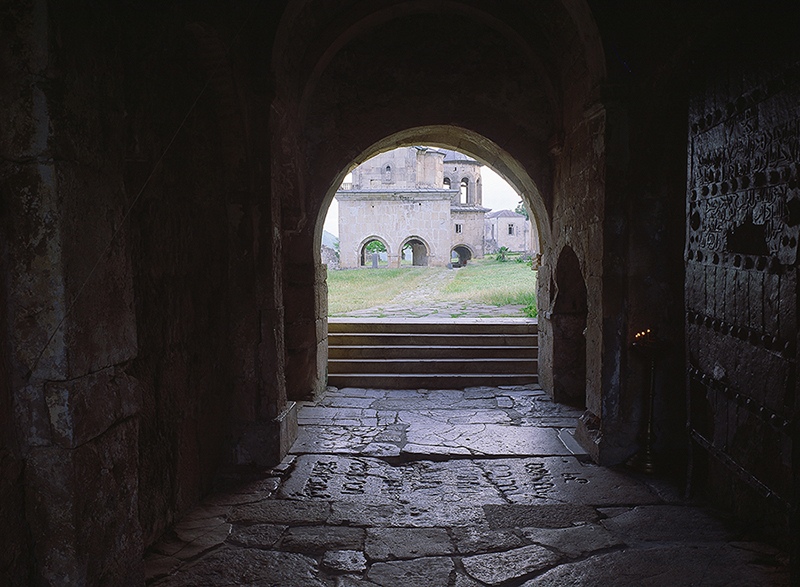
South gate of the monastery, tomb of Davit IV. Photo: G. Chubinashvili National Research Centre
The Church of the Nativity of the Virgin is an ‘inscribed cross’ type structure, with three projecting apses, a narthex, and south and north annexes that were added to the building later (in the 12th and 13th century). The church façades are furnished with decorative arches.
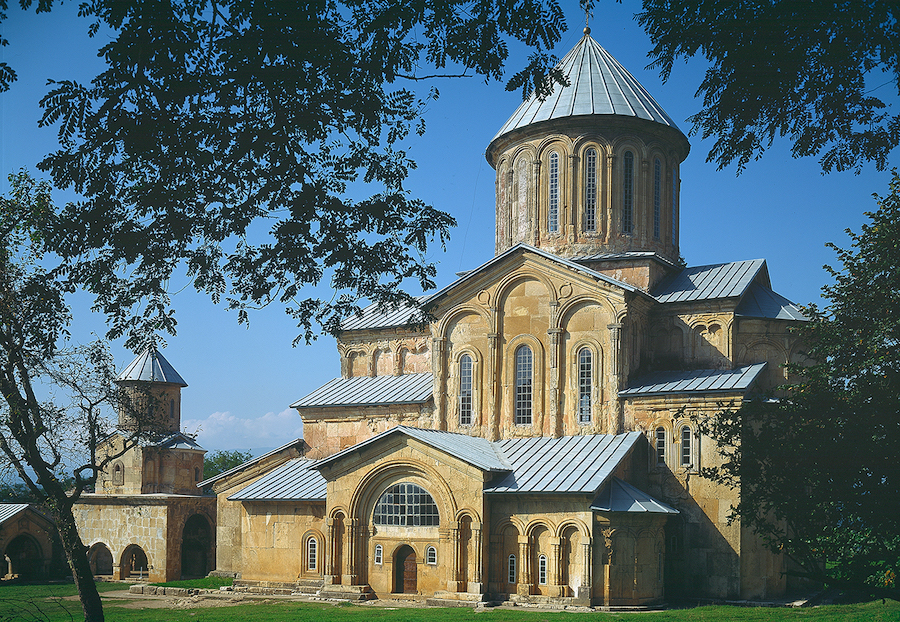
Church of the Nativity of the Virgin. 12th c. Photo: G. Chubinashvili National Research Centre
The wall paintings inside the Church of the Nativity of the Virgin is a multi-layered ensemble. From the original decoration, only the mosaic in the sanctuary conch and the murals of the narthex (both executed between 1125 and 1130) have survived. The solemn and monumental mosaic composition depicts the Virgin Nikopea standing between the Archangels on a glistening gold background. The Gelati mosaic is an outstanding monument of medieval Georgian art: its high artistic quality comparable with the best Byzantine mosaics.
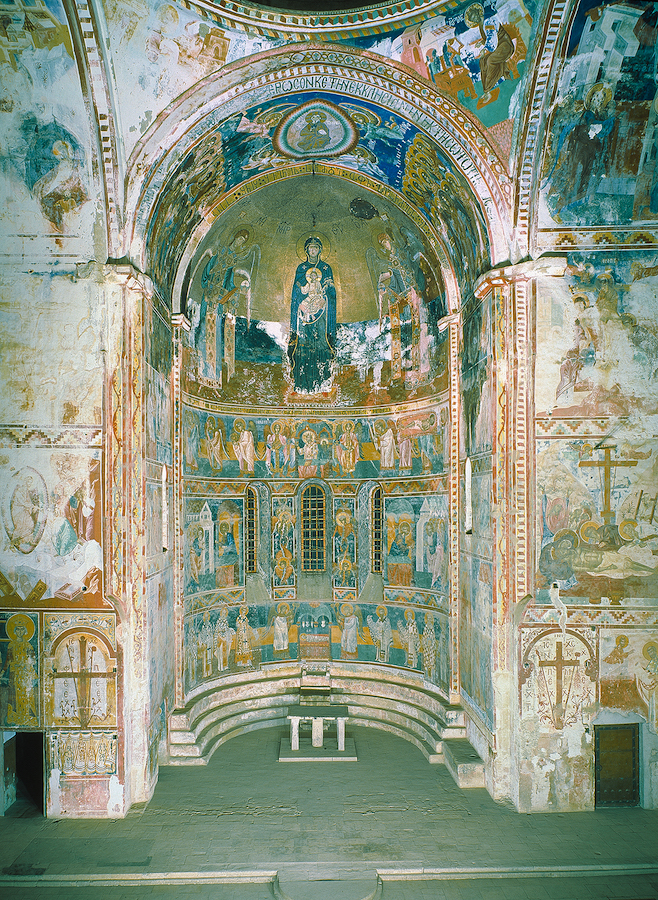
Sanctuary apse. Mosaic (12th c) and Murals (16th c). Photo: G. Chubinashvili National Research Centre

Sanctuary conch. Archangel, detail. 12th c. Photo: G. Chubinashvili National Research Centre
The wall paintings of the narthex mainly comprise the Seven Ecumenical Councils. The murals are characterized by their monumentality and the exquisite manner of execution.
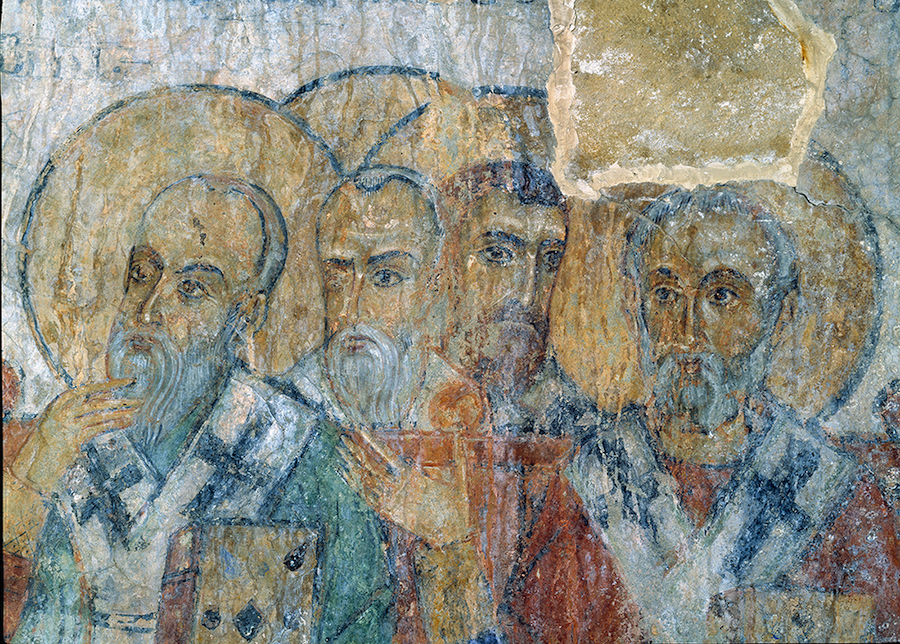
Narthex. Ecumenical Council, detail. 12th c. Photo: G. Chubinashvili National Research Centre
Palaelogan style wall paintings from the late 13th and 14th centuries are preserved in the south-eastern chapel and the southern porch of the Church.
South-eastern chapel. King Davit V Narin. End of the 13th c. Photo: G. Chubinashvili National Research Centre
The majority of the wall paintings in the Church of the Nativity of the Virgin were executed after 1510 – the year Gelati was set on fire by the Turks. The murals were commissioned by the Kings of Imereti – Bagrat III (1510-1565) and George II (1565-1583) – in the 1520s, 1550s and between 1560 and 1578 respectively. The dome of the church bears images of Christ Pantocrator with apocalyptic symbols, the Divine Liturgy, and the Prophets.

Dome. Murals. 1520s. Photo: G. Chubinashvili National Research Centre.
The sanctuary apse displays the Divine Liturgy, the Communion of the Apostles, and the Melismos, while the chancel bay features scenes from the life of the Virgin. The Great Feasts, the Passions of Christ, scenes of the Dormition, and the Akathist Hymn are located in the transept arms of the church.
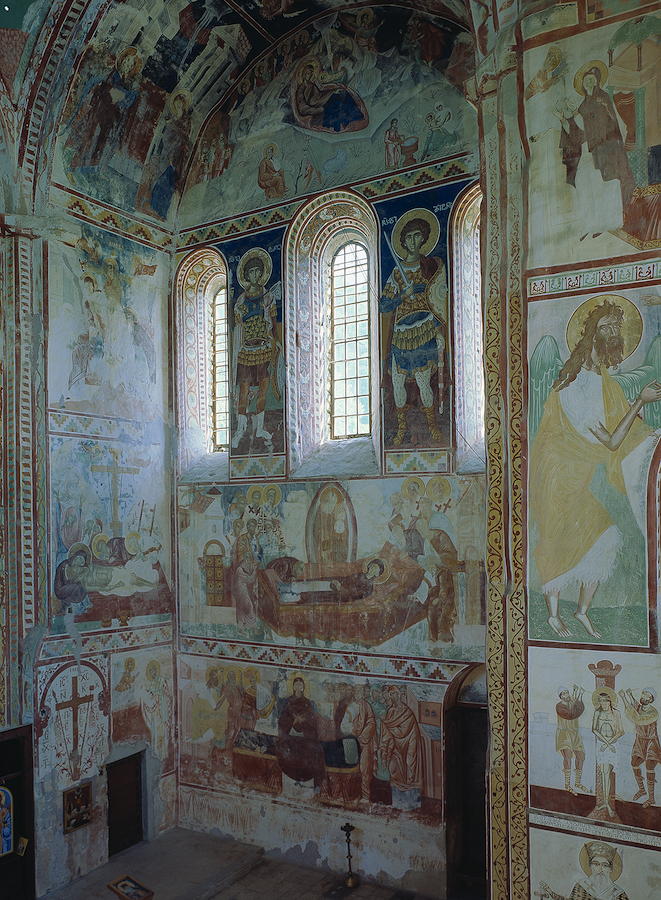
South arm. Murals. 16th c. Photo: G. Chubinashvili National Research Centre.
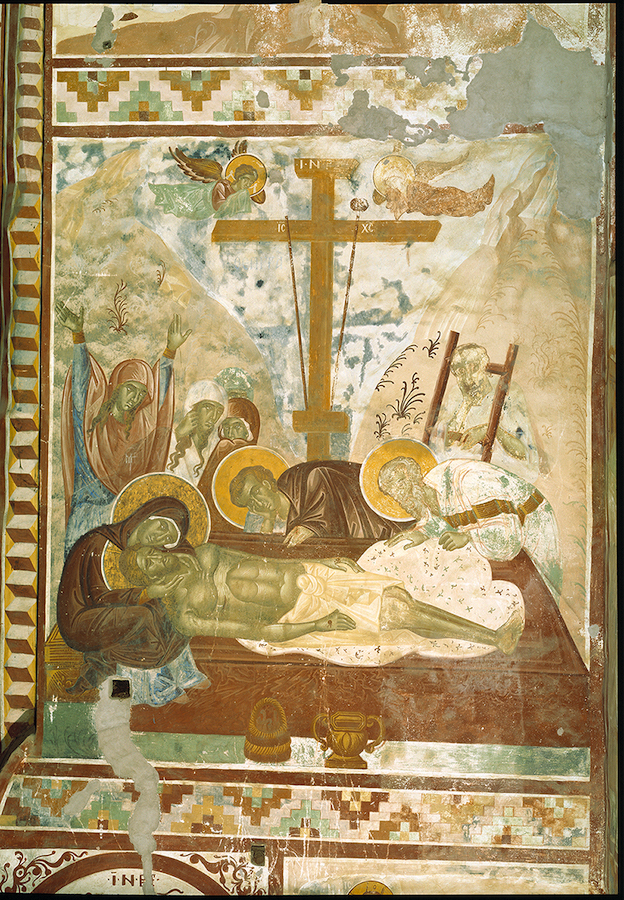
Lamentation. 16th c. Photo: G. Chubinashvili National Research Centre.
Washing of the Disciples’ feet. 16th c. Photo: N. Kuprashvili.
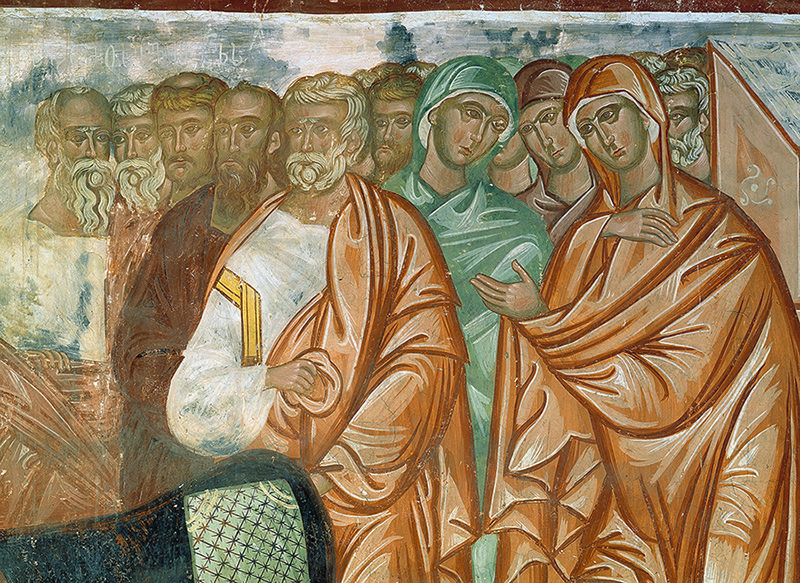
Glorification of the Virgin detail. 16th c. Photo: G. Chubinashvili National Research Centre.
The lower register of the north wall is taken up with donor portraits representing: David IV Aghmashenebeli (1089-1125) with a model of the Church in his hand, Catholicos Evdemon (1557-1578), the Kings of Imereti - Bagrat III (1510-1565) and George II (1565-1583), and their family members.

North wall. Donor portraits. 16th c. Photo: G. Chubinashvili National Research Centre.
The north porch of the Church preserves a remarkable scene depicting the coronation of King Bagrat III of Imereti, which dates from the 1520s. The other wall paintings decorating the porch were executed in the 1580s.
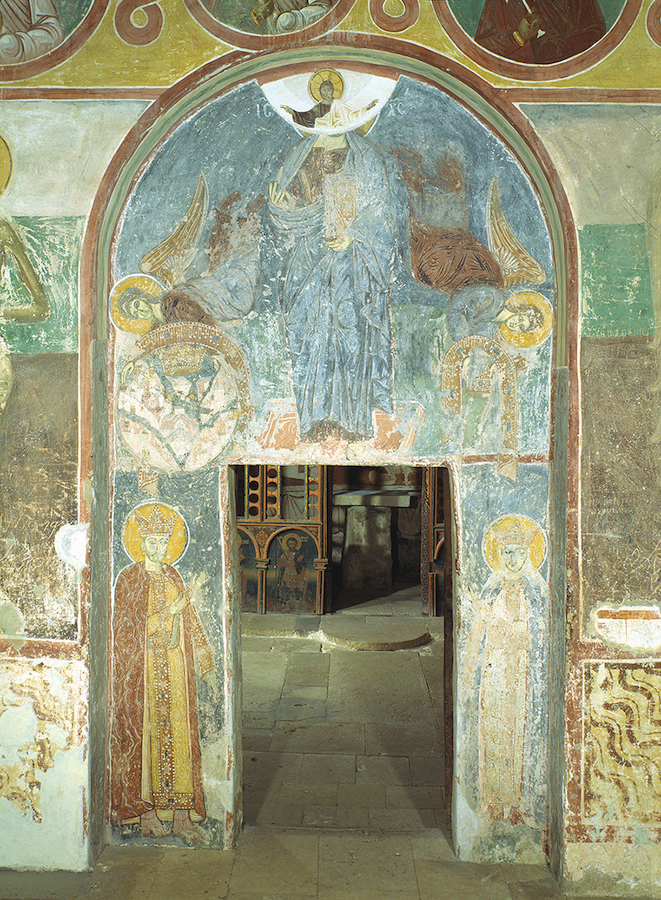
North porch. Coronation of King Bagrat III of Imereti. 1520s. Photo: G. Chubinashvili National Research Centre.
Among the murals dating from the 16th century, there are examples of the professional trend of Post-Byzantine painting as well as simplified variations, while in the south-western chapel, so-called vernacular paintings have been preserved.
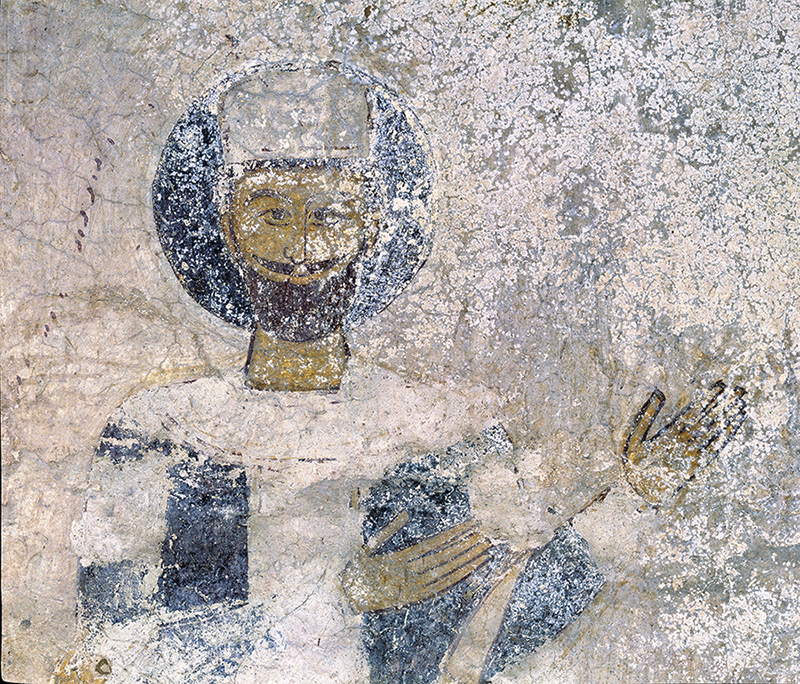
South-west chapel. Donor portrait, detail. 16th c. Photo: G. Chubinashvili National Research Centre
Painting of the Church continued in the 17th century. The murals on the lower part of the western arm featuring scenes of the Passions, as well as the wall paintings in the north-east and north-west chapels were all executed during this period. The 17th-century wall paintings amply demonstrate almost all the stylistic trends of Georgian paintings of this period.

North-east chapel. Entry into Jerusalem. 1604-1639. Photo: G. Chubinashvili National Research Centre.
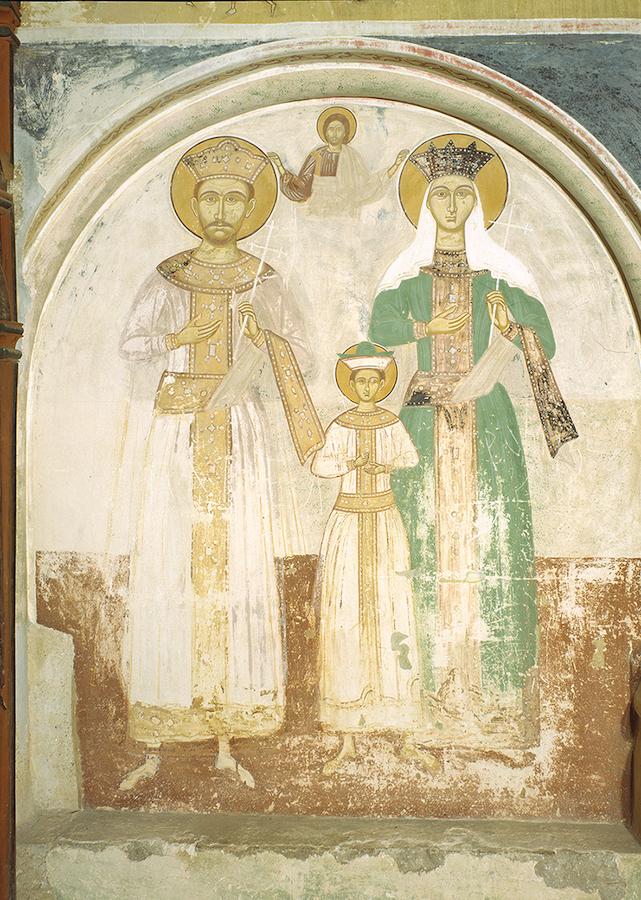
North-east chapel. Giorgi III of Imereti with his wife and son. 1604-1639. Photo: G. Chubinashvili National Research Centre

Murals in the west arm of the Church of the Nativity of the Virgin. 1657-1660. Photo: Chubinashvili National Research Centre.
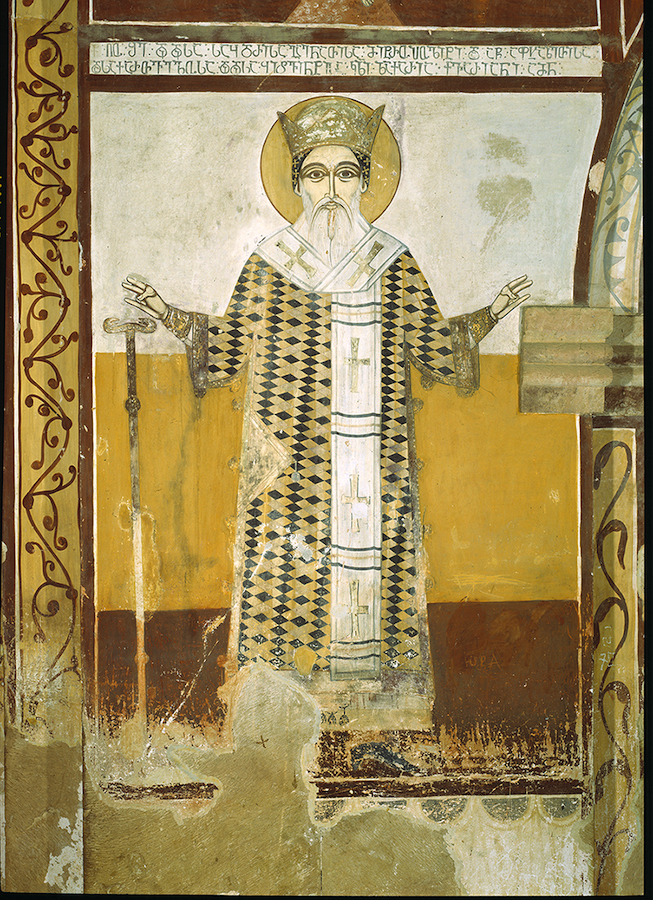
West arm of the Church of the Nativity of the Virgin. Catholikos Zakaria Kvariani. 1657-1660. Photo: G. Chubinashvili National Research Centre.
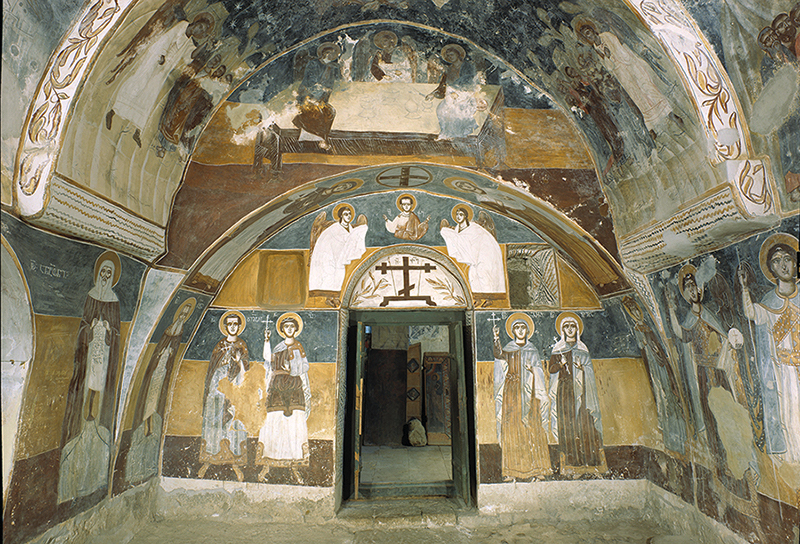
South-west chapel. View to the west. Murals. 1639-1657. Photo: G. Chubinashvili National Research Centre.
The domed Church of St. George stands to the east of the Church of the Nativity of the Virgin. It was adorned with murals between 1565/69 and 1583 by order of Catholicos Evdemon I (1557-1578) and King George II of Imereti (1565-1583) respectively.
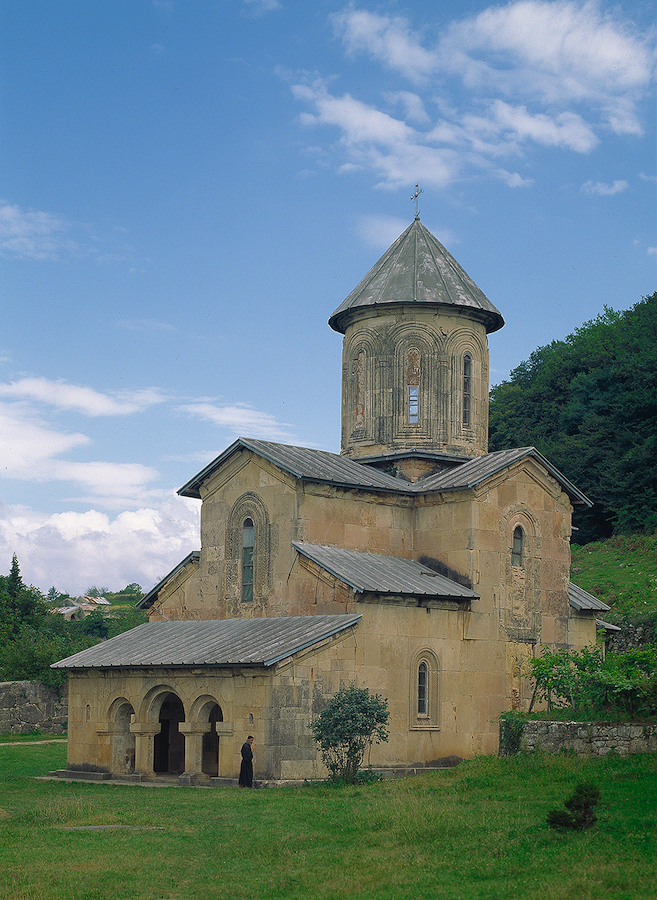
St George’s Church. 13th c. Photo: G. Chubinashvili National Research Centre.
The program of the paintings is quite extensive: the theme of the Glory of Christ is in the dome, the Virgin Nikopeia flanked by the apostles Peter and Paul are portrayed in the sanctuary conch, and the themes of the Eucharistic sacrifice and the Resurrection decorate the walls of the apse and chancel bay.
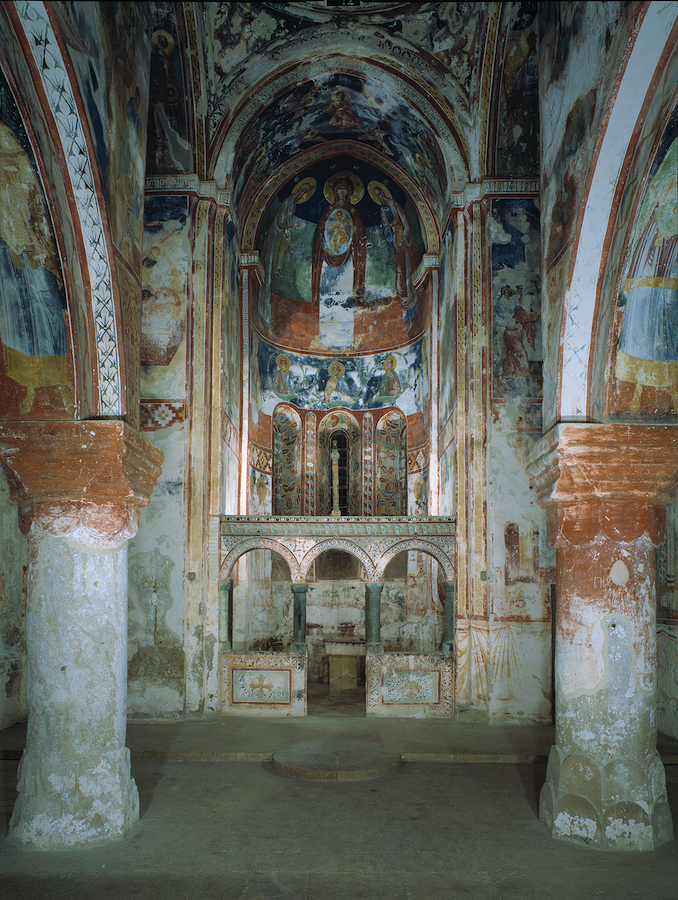
St George’s Church. View to the east. Photo: G. Chubinashvili National Research Centre.
The Great Feasts are depicted in the arms of the church, and scenes from St. George's life are in the corner bays. Among the numerous saints portrayed, the Georgian martyrs St. Davit and St. Constantine of Argveti are also shown.
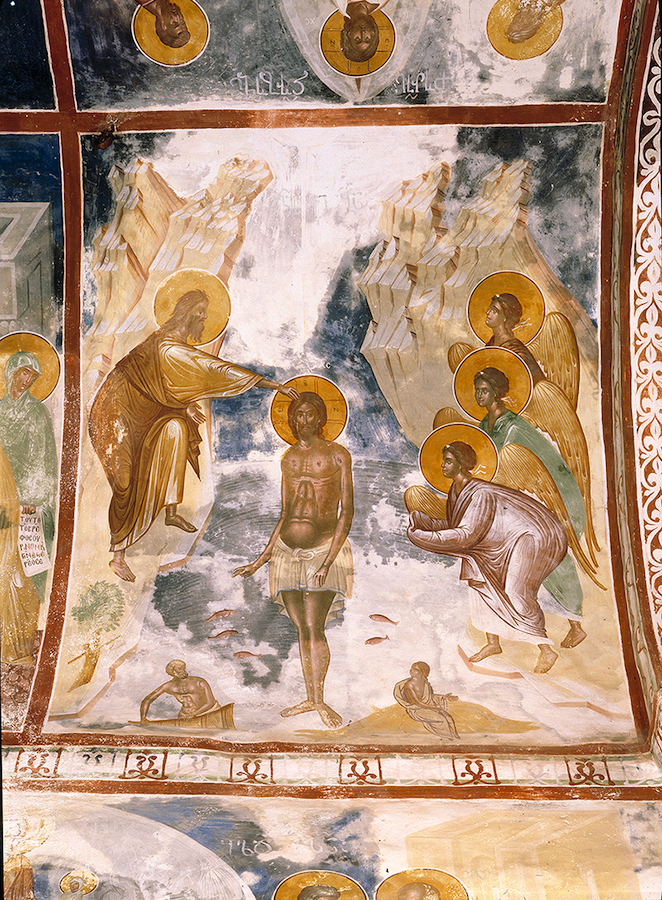
Baptism. Photo: G. Chubinashvili National Research Centre.

Transfiguration. Photo: G. Chubinashvili National Research Centre.
The lower registers of the paintings are almost entirely devoted to portraits of historical figures (Catholicos Evdemon I, Kings Bagrat III of Imereti, and George II of Imereti, together with their family members).

King Bagrat III of Imereti. Photo: G. Chubinashvili National Research Centre
The masterfully executed wall paintings of the Church of St. George have much in common with the most outstanding examples of Post-Byzantine paintings.
Monastic life in Gelati has continued for 900 years from its foundation to the present day, with the exception of the Soviet period (1923-1988) throughout which the monastery was closed. It reopened as a functioning monastery in 1988.